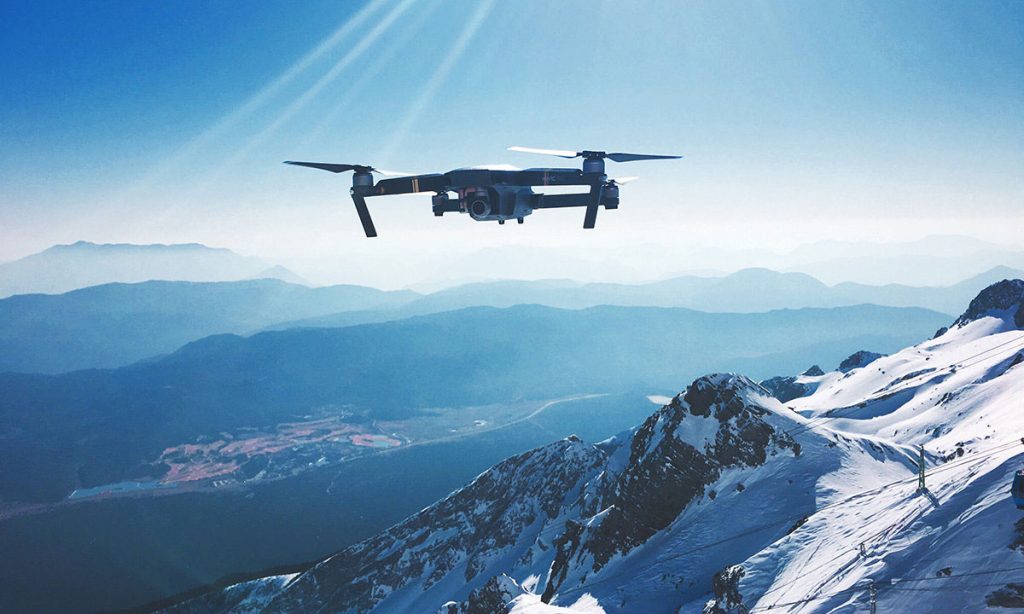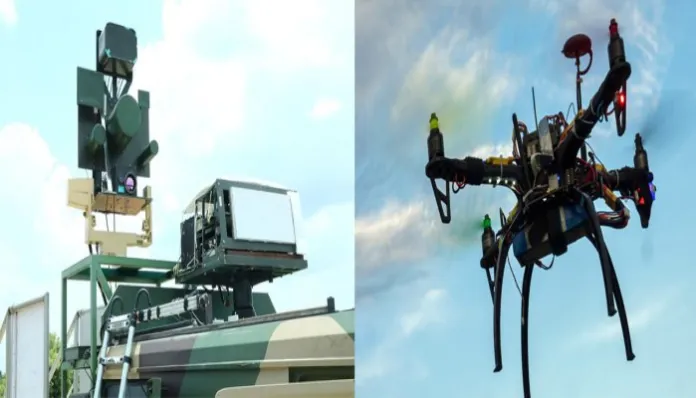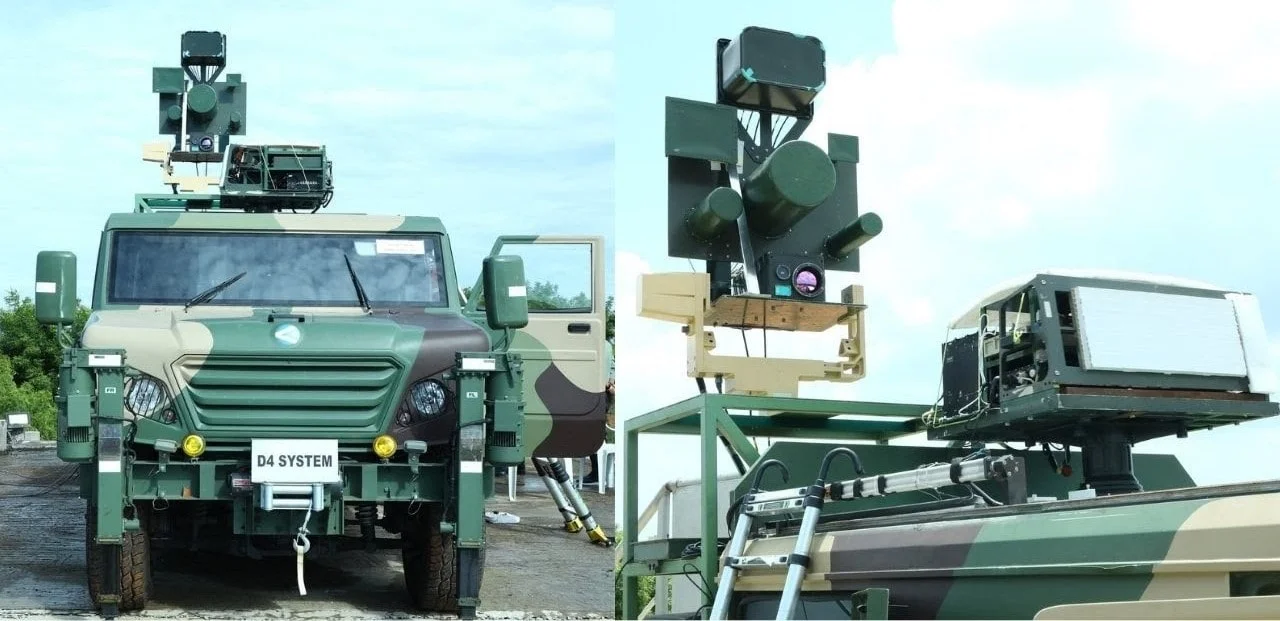Why Every Important Infrastructure Needs an Anti-Drone CUAS Drone Detection System
Table of Contents
What is an Anti-Drone CUAS System?
An anti-drone Illegal drones in restricted airspace can be found, tracked, and destroyed with the help of the CUAS drone detection system. To detect and neutralize any threats, these systems use a range of technologies, including radar, radio frequency detection, and electro-optical devices.
These methods focus on protection in addition to detection. Sensitive regions are surrounded by a virtual protection that prevents illegal drones from entering. The technology in use is always changing according to new drone models and strategies employed by potential attackers.
Through the use of a variety of sensors and technologies, these systems offer a multi-layered security solution. This guarantees that other defenses will continue to be in place to eliminate the danger even if one is affected.

The Components of an Anti-Drone CUAS Drone Detection System
How well an anti-drone technology works, the components that make up the CUAS Drone Detection system. Radar systems are essential since they are the first to detect drones by looking for them in the sky.
Radio frequency detectors are essential since they pick up the signals that drones generate, making identification fast. Visual tracking is improved by electro-optical systems, which also help with identification by delivering real-time imagery.
Each element works in concert with the others to form an integrated protection system. These elements work together to guarantee early drone detection, perfect tracking, and effective drone neutralization.
How Does it Work?
The primary goal of an anti-drone CUAS drone detection system is to provide a layered defense mechanism against potential drone threats. Here’s how it typically works:
- Detection: The system uses radar and other sensors to detect drones entering a defined airspace. This initial detection is crucial for ensuring that potential threats are identified as soon as they enter restricted zones.
- Tracking: Once detected, the system continuously monitors the drone’s trajectory. This tracking allows for the prediction of the drone’s path and potential targets, enabling preemptive actions.
- Identification: Advanced systems can identify the type of drone and its capabilities. This identification process helps in determining the threat level and the appropriate response strategy.
- Neutralization: Depending on the system, the threat can be neutralized by jamming its control signals or capturing it using nets or other means. Neutralization methods are chosen based on the drone’s behavior and the risk it poses.
The Importance of Protecting Critical Infrastructure
The foundation of a country’s economy and security is its critical infrastructure. Any disturbance might have terrible effects, affecting everything from economic stability to public safety.
Why Drones Set a Threat
Anti-drone systems can be used for terrorism, smuggling, and surveillance, among other illegal activities. They are hard to find with traditional security methods because of their small size and activity.
Anti-drone systems can now carry larger payloads because to technological developments, which raises the possibility that they will be misused. This feature makes it possible to deliver chemical or biological agents in addition to explosives.
They are particularly dangerous since they can get past conventional security measures. Their ability to be operated remotely makes it more difficult to identify the source of a threat, which makes response attempts more difficult.
High-Profile Incidents
There have been several high-profile incidents where drones have disrupted operations or posed security risks. For instance, in 2018, unauthorized drone sightings at Gatwick Airport led to widespread flight cancellations, affecting thousands of passengers.
Such incidents are not isolated. There have been reports of drones being used to smuggle contraband into prisons, posing a significant challenge to correctional facility security.
In another case, drones were spotted flying over nuclear power plants, raising alarms about potential espionage or sabotage attempts. These incidents underline the vulnerabilities that exist in critical infrastructure security.
The Consequences of Inaction
Drones are a threat, and ignoring it might have negative effects. If a drone attack on an airport or power plant is successful, there could be injuries, serious financial losses, and generalized fear.
Governments and organizations that fail to maintain their valuables risk severe harm to their reputations. Drone-related disruptions can also have a serious impact on finances, with expenses reaching the millions.
The threat does not go away if it is ignored. Since there is a greater chance of harmful use of drones as they become more widely available, security measures are crucial.

Benefits of Implementing Anti Drone Technology
Implementing anti-drone CUAS technology offers numerous benefits, from enhanced security to operational efficiency.
Enhanced Security
The increased protection that anti-drone technology offers is by far its greatest benefit. Critical infrastructures may avoid interruptions and guarantee continued operation by identifying and eliminating possible risks.
This proactive strategy secures sensitive data in addition to safeguarding real estate. Information protection is just as important in the digital age as physical infrastructure protection.
Additionally, improved security measures increase public trust. Businesses and the public feel safe by the knowledge that strong processes are in place to fight possible dangers.
Cost-Effective Solutions
Given the possible damages from a successful drone attack, the initial investment in anti-drone systems equipment may appear costly, but it is warranted. Furthermore, modern systems can be customized to meet certain requirements and are becoming more and more cost-effective.
The benefits from reducing possible disruptions outweigh the cost of putting these technologies in place. It is usually more economical to invest in prevention rather than incident response.
These systems’ scalability guarantees their continued importance as threats change, offering long-term financial benefit.
Real-Time Monitoring
Safety experts are able to respond quickly to any attacks thanks to real-time monitoring capabilities provided by advanced technologies. This ability to respond quickly is necessary for stopping problems before they get out of hand.
Making educated decisions is made possible by the actionable insights that real-time data offers. It makes it possible to continuously evaluate threat levels, guaranteeing that safety protocols are always at their best.
Security teams are constantly one step ahead of possible threats thanks to this quick feedback loop, which improves situational awareness.
Key Features of Effective Drone Defense Systems
When choosing an anti-drone CUAS Drone Detection system, it’s essential to consider several key features that ensure comprehensive protection.
Flexibility
A good drone defense system should be flexible and able to identify a variety of drone sizes and types. This adaptability guarantees that any possible danger is addressed.
Being flexible also entails adjusting to various settings, both urban and rural, to make sure that no possible danger is overlooked.
Another feature of flexibility is the capacity to manage several drones at once, guaranteeing thorough coverage even during coordinated attacks.
Integration with Existing Security Measures
Anti-drone solutions should be fully integrated with the current security infrastructure for ultimate efficiency. This integration guarantees that all areas of security is addressed and enables a coordinated response.
Integration simplifies operations and boosts efficiency by lowering the complexity of conducting several security solutions.
Additionally, it guarantees the collection of data from multiple sources, allowing for improved risk evaluation and a complete understanding of the security environment.
Scalability
Our defenses must advance along with drone technology. Long-term protection can be maintained using a scalable system that can adjust to new threats.
Scalability guarantees that systems continue to function well as the threat landscape develops, offering solutions that are ready for the future.
This flexibility, which enables the introduction of new technologies and threat detection techniques as they become available, is necessary for protecting security stability.

Real-World Applications and Success Stories
Several critical infrastructures have successfully implemented anti-drone systems, showcasing their effectiveness in real-world scenarios.
Airports
Airports worldwide have been proactive in adopting drone defense systems to prevent disruptions. For instance, Heathrow Airport has invested in cutting-edge technology to ensure the safety of its airspace.
The proactive measures taken by airports have minimized the risk of flight disruptions, ensuring passenger safety and operational continuity.
These systems have also enhanced the ability to manage and mitigate potential threats, reducing the risk of costly delays and cancellations.
Power Plants
Power plants, given their strategic importance, have also recognized the need for drone defense. By implementing anti-drone systems, they can prevent unauthorized surveillance and potential sabotage.
These systems provide an additional layer of security, protecting vital infrastructure from espionage and attacks.
The adoption of these technologies has also led to increased confidence among stakeholders, ensuring the continued trust in power reliability and safety.
Government Facilities
Government buildings and facilities are prime targets for surveillance. Anti-drone systems provide an additional layer of security, ensuring sensitive information remains protected.
These systems help prevent unauthorized access to restricted areas, safeguarding national security interests.
The implementation of such systems has also enhanced the ability of government agencies to respond swiftly to potential threats, ensuring the protection of critical operations.
Conclusion: The Future of Drone Defense
The risks created by drones will only grow as their technology develops further. Critical infrastructures must invest in a strong anti-drone CUAS drone detection system in order to keep ahead of these risks. By doing this, they may protect their operations’ safety and security, protecting the general public as well as their financial interests.
In conclusion, anti-drone technology is not only an advantage but also a need in the modern world. As drone technology advances, our defenses must also respond. Protecting vital infrastructure is crucial, and we can successfully reduce the threats created by unapproved drones if we have the appropriate systems in place.
Drone defense’s future depends on ongoing innovation and modification. We can guarantee a safe environment for all vital infrastructures and set the road for a safer and stronger future by being ahead of technology developments and any threats.

